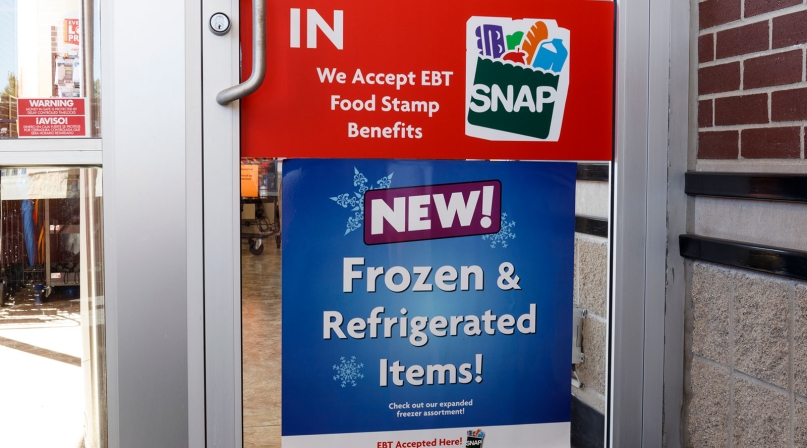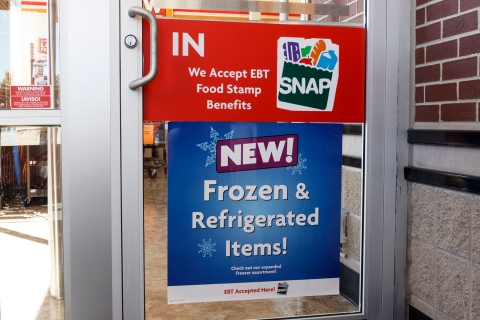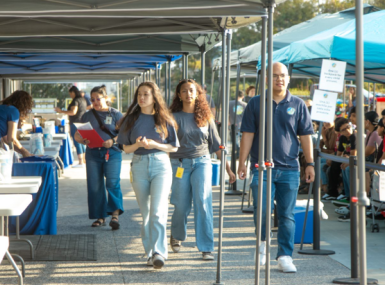Author
Upcoming Events
Related News

Key Takeaways
On December 5th, 2019, the U.S. Department of Agriculture Food and Nutrition Service (USDA FNS) finalized a rule to narrow state options to waive work requirements for able-bodied adults without dependents (ABAWDs) participating in the Supplemental Nutrition Assistance Program (SNAP), formerly known as food stamps.
Under current law, ABAWDs – individuals 18 through 49 who are not disabled or caring for children or other dependents – may only access food assistance through SNAP for three months in a 36 month period unless they are working 20 hours a week or enrolled in an employment or training program. In 2017, 2.8 million ABAWDs participated in SNAP, representing 7 percent of total program enrollees.
States have long had the option to request state-wide waivers or partial (county or county-equivalent) waivers to exempt this population from the time-limit by meeting certain criteria for high levels of unemployment or limited available jobs. The final rule, which goes into effect April 1, 2020, significantly reduces the ability of states to receive these waivers by limiting the qualifying criteria and geographic scope. Specifically, the rule:
- Narrows the unemployment threshold: Areas are currently eligible for waivers when their unemployment rate exceeds the national average by 20 percent over a 24-month period or reaches an average rate of at least 10 percent over a 12-month period. The final rule does not alter the latter standard, but it adds a floor to the former: areas exceeding the national average by 20 percent must also have at least 6 percent unemployment over that same period. USDA estimates that 371 counties alone will lose area-waiver eligibility under this provision.
- Eliminates Extended Unemployment Benefit criterion: The rule will also eliminate the existing option for states to qualify for waivers when, due to rapid spikes in unemployment (as often happens during a recession) they qualify for extra federal unemployment benefits under the U.S. Department of Labor (referred to as Extended Unemployment Benefits, or EUB). USDA acknowledges that though no states currently qualify for EUB, eliminating it as a criterion could delay waiver approval during a national or state economic downturn.
- Removes flexibility for geographic areas eligible for waivers: Under the final rule states will also no longer be able to request state-wide or county-level waivers but instead must apply to exempt Labor Market Areas (LMAs) as defined by the Department of Labor. While some single counties constitute a whole LMA, others are grouped together. USDA estimates that 408 counties alone will lose area-waiver eligibility due to these changes.
- Limits carryover options: Under current law, states can exempt up to 12 percent of their ABAWD population from work each year. If states do not use these exemptions, they can be “rolled over” for future years, which has permitted states to build up large surpluses of exemptions, which may then be used during economic downturns. The final rule limits this carry-over allowance to just one year, meaning states and counties will have fewer exemptions stored in the event of a future economic downturn. Unlike other provisions of this rule, the carry-over limitation will not take effect until October 1, 2020.
USDA estimates that 76 percent of counties (712 total) currently eligible for waivers will no longer qualify for those exemptions when the majority of the rule goes into effect in April 2020, with USDA projecting an initial 224,000 individuals immediately losing access to the program. Once the limit on carry-over exemptions takes effect in October 2020, however, that number will grow to an estimated nearly 700,000 ABAWDs leaving the program.
As NACo suggested when the rule was initially proposed, these changes could impact counties in numerous ways. With individuals struggling to find employment leaving the federal SNAP program due to the stricter requirements, counties may see increased demand for other services. Limited access to county-level waivers, restrictions on carry-over exemptions and the loss of the EUB criterion could further impede our ability to leverage SNAP to meet basic needs and stimulate local economies during unexpected economic downturns. County agencies may also face additional administrative and financial burden due to increased time an increase in time spent screening and tracking beneficiaries as they move on and off SNAP.
As was mentioned above, the majority of the final rule will take effect on April 1, 2020, though any legal challenges could cause delays in the implementation date of the rule.

Attachments
Related News

National Association of Counties expands programming to build childcare supply
NACo announces the launch of its Childcare Supply Network. This new peer learning network will support local leaders in addressing childcare challenges and co-creating sustainable solutions to strengthen local childcare systems in response to workforce needs.

California county program helps spark student careers
San Diego County created a win-win program to fill open staff vacancies and give college students real-world work experience.

California county, non-profit help launch child-care startups
Adrianna Segura, a Stanislaus County, Calif. mother of two, was licensed to be a home-based child-care provider, but she didn’t know the first thing about starting a business. She knew how to take care of children, but she wasn’t sure how to file taxes, create contracts or what her rate should be.
